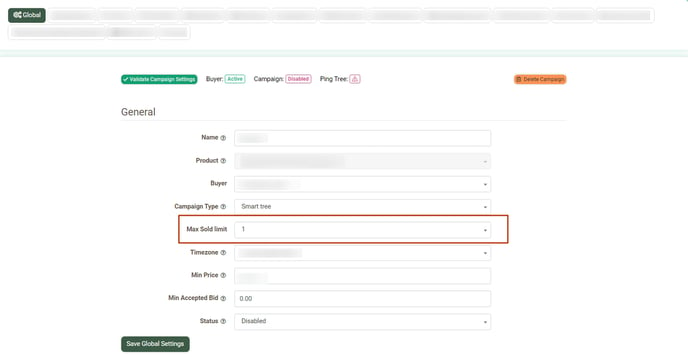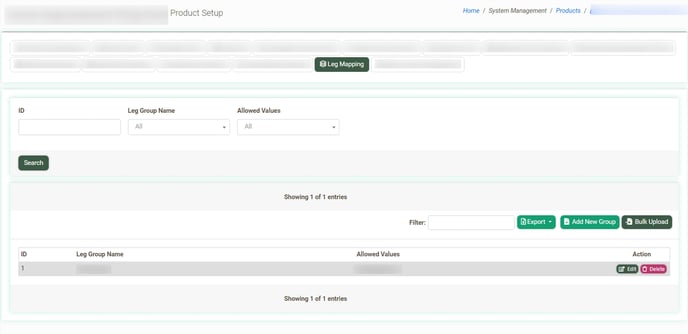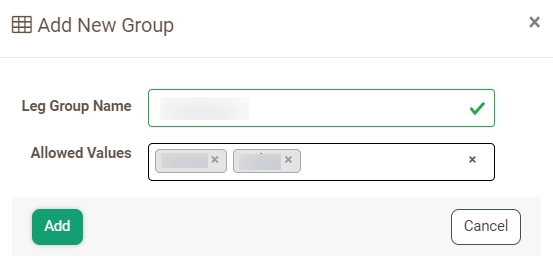The Multi-Leg Integration for Smart Tree Campaigns allows Buyers to send multiple responses to the ping with different prices and Max Sold Limit values as well as allows the Publisher to choose offers to sell leads to.
Read more about the Smart Tree Configuration in this Knowledge Base article.
The Multi-Leg Integration allows the Buyer to send a response with multiple offers (“Legs”) to the Publisher. Legs from one Buyer may have different prices and Max Sold Limit values.
Based on the Max Sold Limit value, Legs can have an “Exclusive” type (Max Sold Limit = 1) and a “Shared” type (Max Sold Limit >1).
The “Phonexa Leg” is an exclusive offer calculated automatically by the system that contains the best Leg combination based on the Price + Max Sold Limit.
After the ping is sent into the system, the Publisher receives responses from Buyers with different Legs. Each Leg has a unique “ID” and “Leg Name” (The end service provider company name or another unique parameter, that identifies the service provider) so the Publisher can choose offers to accept and send a post to (for the Ping Post type of posting only, during the Full Post type lead is sold automatically to the best offer).
To view the configuration for the Multi-Leg Integration on the Product level, go to the System Management > Products section, select the Product, click the “Settings” button in the “Actions” column, and navigate to the “Advanced Settings” tab, “Smart Tree Settings” block.

You can configure the following settings:
- Enable MD5 Hash:
- Select the “Yes” option to enable the Leg Name hashing for all Campaigns of this Product, except Campaigns that have the “Enable MD5 Hash for Leg Name” field set to the “No” option in the Campaign`s settings.
- Select the “No” option to disable the Leg Name hashing for all Campaigns of this Product, except Campaigns that have the “Enable MD5 Hash for Leg Name” field set to the “Yes” option in the Campaign`s settings.
- Enable Smart Leg: Select the “Yes” option if you want the Publisher to receive an exclusive offer calculated automatically by the system with the best Leg combination based on the Price + Max Sold Limit. Note: This option is disabled by default (the “No” option is set).
- Smart Leg Name: Enter the name of the exclusive offer calculated automatically by the system.
- Smart Tree Processing Time: Enter the time limit to post a lead to the Buyer (in seconds).
- Smart Tree Leg Statuses:
- Select the “Sold” option to sell the lead to the Smart Leg, even if one of the Legs responds to the post with the “Reject” status and the Publisher cannot receive the payout that was promised to him based on the Buyers` responses to ping.
- Select the “Reject” option to send the “Reject” status to the Publisher if one of the Legs responds to the post with the “Reject” status and the Publisher cannot receive the payout that was promised to him based on the Buyers` responses to ping.
To set the “Max Sold Limit” for the Campaign, go to the Campaign`s Settings “Global” tab and select the value in the “Max Sold Limit” field. Click the “Save Global Settings” to proceed.
The “Leg Mapping” feature allows you to filter out legs with the same “Leg Name” (The end service provider company name or another unique parameter, that identifies the service provider), based on the offered price and Max Sold Limit value, to send the Publisher the best offer.
To manage the filter settings, go to the System Management > Products section, select the Product, click the “Settings” button, and navigate to the “Leg Mapping” tab.
 To add a new group of the Leg Name values for filtering, click the “Add New Group” button and enter the Name for the Group into the “Leg Group Name” field and Leg Name variations into the “Allowed Values” field. Click the “Add” button to complete the process.
To add a new group of the Leg Name values for filtering, click the “Add New Group” button and enter the Name for the Group into the “Leg Group Name” field and Leg Name variations into the “Allowed Values” field. Click the “Add” button to complete the process.
After the group is created, the system will check values in the Buyers` responses, filter out legs that contain the values set for the group, and select the only leg with the “Shared” type (Max Sold Limit > 1) and best price that will be presented to the Publisher.
Note: Legs with an “Exclusive” type are always sent to the Publisher and are not subject to filtering.
To view the information about lead processing through the set legs, go to the All Reports > Buyer Reports > Lead Details section, select the corresponding lead from the list, and click the button in the “Lead ID” field.
You will be redirected to the Lead Info section, where you should go to the “Filter Log” tab and select the “Smart tree” subtab.
The main block contains two blocks with information about Pings and Posts processing through legs for the particular lead.
The “Ping” block contains the following information:
- Min price: The minimum price for the lead.
- Date: The date and time when the lead ping was sent.
- Campaign: The name of the buyer and the name of the campaign.
- Legs: The name of the leg.
- Bid Price: The price at which the lead was bidded.
- Status: The status of the lead ping for the particular leg.
- Message: Additional information about the lead.
- Time: The processing time of the lead ping.
- Pre-Ping Time: The processing time of the lead pre-ping.
The “Post” block contains the following information:
- Min price: The minimum price for the lead.
- Date: The date and time when the lead post was sent.
- Campaign: The name of the buyer and the name of the campaign.
- Legs: The name of the leg.
- Sold Price: The price with which the lead was sold.
- Status: The status of the lead post for the particular leg.
- Message: Additional information about the lead.
- Time: The processing time of the lead post.
- Pre-Ping Time: The processing time of the lead pre-ping.
To view full information about the ping or post record, click the “Log” button in the “Log” column. The detailed information about requests and responses to the ping or post will be displayed in the pop-up window below.




